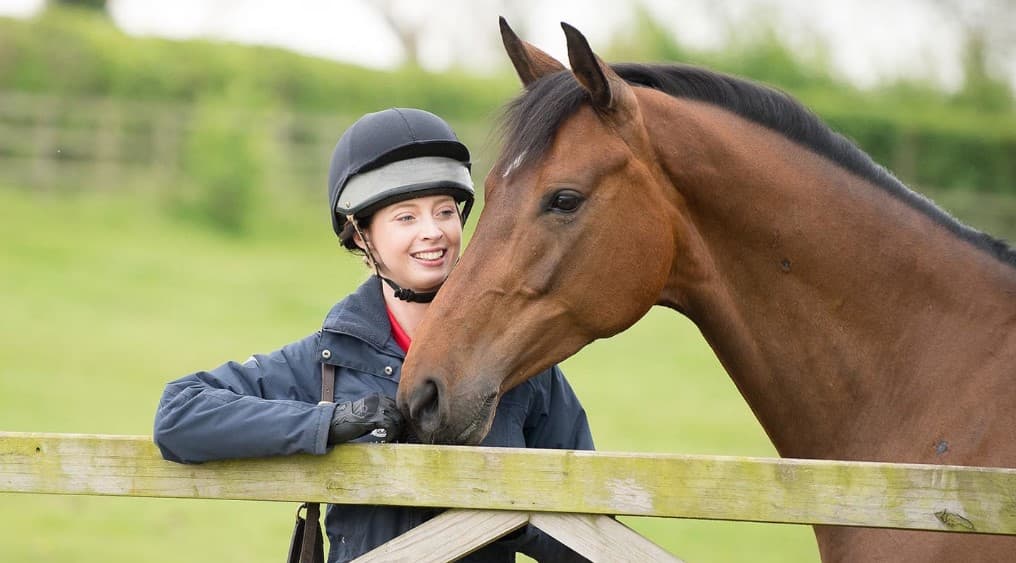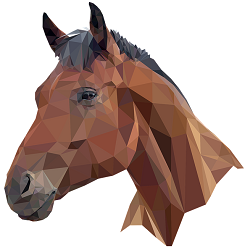
The relationship between humans and horses spans millennia, evolving from one of necessity to a complex partnership encompassing work, sport, and companionship. Throughout this long history, the methods used to train these majestic animals have undergone significant transformations. Today, we stand at a fascinating intersection where cutting-edge scientific understanding meets time-honored horsemanship traditions.
This holistic approach to horse training, which marries modern techniques with ancient wisdom, offers unprecedented opportunities for developing strong, trusting relationships between horses and their human counterparts. By combining the best of both worlds, trainers can create more effective, humane, and rewarding experiences for both horse and handler.
The Foundations of Horse Training
At the core of all successful horse training lies a foundation built on trust, respect, and mutual understanding. These elements are essential, regardless of whether one is employing the latest scientific methods or drawing from centuries-old traditions.
Building Trust and Respect
The cornerstone of any productive horse-human relationship is trust. Without it, even the most sophisticated training techniques will fall short. Establishing trust requires patience, consistency, and a deep appreciation for the horse’s perspective.
Key elements in building trust:
- Clear communication
- Predictable behavior from the handler
- Positive reinforcement
- Gradual exposure to new experiences
- Respecting the horse’s boundaries
Respect, too, must flow both ways. A horse that respects its handler is more likely to be responsive and cooperative during training sessions. Conversely, a handler who respects the horse’s natural instincts and individual personality will be better equipped to create effective training strategies.
Positive reinforcement techniques have gained significant traction in recent years as a means of building trust and encouraging desired behaviors. This approach involves rewarding the horse for correct actions, rather than punishing unwanted behaviors. Common rewards include:
- Treats (in moderation)
- Verbal praise
- Physical affection (e.g., patting, scratching favorite spots)
- Brief periods of rest or freedom
By consistently associating positive outcomes with desired behaviors, trainers can foster a sense of eagerness and willingness in their equine partners.
Understanding Horse Behavior
A thorough grasp of equine psychology and communication is crucial for effective training. Horses are prey animals with highly developed social structures and communication systems. Understanding these natural instincts and behaviors allows trainers to work with, rather than against, the horse’s nature.
Key aspects of horse behavior to consider:
- Herd mentality
- Fight or flight response
- Body language and vocal communication
- Hierarchy and dominance structures
- Natural learning processes
By observing how horses interact with each other and their environment, trainers can gain valuable insights into effective communication and leadership strategies. This knowledge forms the basis for many traditional training methods and informs modern techniques as well.
Modern Training Techniques
Advancements in behavioral science and animal psychology have led to the development of innovative training methods that prioritize the horse’s mental and emotional well-being alongside physical performance.
Clicker Training
Clicker training is a form of positive reinforcement that uses a distinct sound (usually from a small handheld device) to mark the exact moment a horse performs a desired behavior. This precise timing allows the horse to clearly understand which action is being rewarded.
Benefits of clicker training:
- Accelerates learning process
- Enhances communication between horse and handler
- Encourages the horse to think and problem-solve
- Can be used to shape complex behaviors
The clicker serves as a “bridge” between the desired behavior and the reward, allowing for more accurate timing than verbal praise alone. This method has proven particularly effective for teaching specific tasks or movements, such as lateral work or jumping techniques.
Desensitization and Counterconditioning
These closely related techniques are invaluable for helping horses overcome fear or anxiety towards specific stimuli. Desensitization involves gradually exposing the horse to the fear-inducing object or situation in a controlled manner, while counterconditioning aims to change the horse’s emotional response by associating the scary stimulus with something positive.
Example: Trailer loading
- Start by allowing the horse to observe the trailer from a distance
- Gradually decrease the distance while ensuring the horse remains calm
- Reward the horse for approaching and investigating the trailer
- Practice walking up to and into the trailer, rewarding each step
- Build up to full loading and short trips
This methodical approach helps the horse build confidence and positive associations, making formerly stressful situations more manageable.
Target Training
Target training involves teaching a horse to touch or follow a specific object (the target) with its nose or another body part. This versatile technique can be used to teach a wide range of behaviors and is particularly useful for horses that are hesitant or easily distracted.
Applications of target training:
- Teaching specific movements (e.g., lateral work, backing up)
- Encouraging horses to approach new objects or enter unfamiliar spaces
- Facilitating medical procedures or grooming
- Improving focus and attentiveness
By breaking complex tasks into smaller, manageable steps centered around following the target, trainers can help horses build confidence and master new skills more easily.
Ancient Wisdom: Time-Tested Techniques
While modern science has brought valuable insights to horse training, many traditional methods have stood the test of time, proving their effectiveness over centuries of practical application.
Importance of Groundwork
Groundwork forms the foundation of many classical training approaches. These exercises, performed with the handler on the ground, establish clear communication and respect before progressing to mounted work.
Common groundwork exercises:
- Leading and haltering
- Lunging
- Free lunging in a round pen
- Yielding to pressure
- Desensitization to touch and objects
Groundwork allows the handler to observe the horse’s body language and responses closely, facilitating a deeper understanding of the individual animal’s personality and needs. It also provides opportunities to reinforce basic obedience and build trust in a controlled environment.
Natural Horsemanship
Natural horsemanship is a philosophy that emphasizes working with the horse’s natural instincts and communication methods rather than trying to dominate or force compliance. This approach draws heavily from observations of wild horse behavior and aims to create willing partnerships based on mutual understanding.
Key principles of natural horsemanship:
- Clear, consistent communication
- Respect for the horse’s perspective
- Use of body language and energy to influence behavior
- Progressive training that builds on small successes
Notable figures in the natural horsemanship movement include Pat Parelli, Monty Roberts, and Buck Brannaman. While their specific methods may vary, all share a commitment to developing strong, trust-based relationships with horses.
Importance of Patience and Consistency
Perhaps the most enduring lesson from traditional horsemanship is the critical role of patience and consistency in training. Horses thrive on routine and clear expectations. Rushing the training process or inconsistently enforcing rules can lead to confusion and setbacks.
Benefits of patient, consistent training:
- Builds trust and reduces anxiety
- Allows time for proper muscle development and coordination
- Encourages the horse to think and problem-solve
- Reduces the risk of developing bad habits or resistance
This timeless wisdom applies equally to modern training methods and serves as a reminder that effective horsemanship is as much about the trainer’s mindset as it is about specific techniques.
Combining Modern and Traditional Approaches
The most effective horse training programs often draw from both modern scientific understanding and time-tested traditional methods. This integrated approach allows trainers to tailor their techniques to each individual horse’s needs and temperament.
Advantages of a combined approach:
- Flexibility to address diverse training challenges
- Ability to leverage the strengths of different methods
- Enhanced understanding of equine behavior and learning processes
- Improved horse welfare through stress reduction and positive reinforcement
For example, a trainer might use clicker training to teach a specific movement, while incorporating natural horsemanship principles to build overall trust and respect. Similarly, modern desensitization techniques can be combined with traditional groundwork exercises to create a comprehensive training program.
| Training Aspect | Modern Technique | Traditional Method | Combined Approach |
| Teaching new skills | Clicker training | Pressure and release | Use clicker to mark correct responses, gradually incorporate subtle pressure cues |
| Building trust | Positive reinforcement | Groundwork exercises | Incorporate treats or clicker during groundwork sessions |
| Overcoming fear | Systematic desensitization | Flood training | Gradual exposure with positive reinforcement |
| Establishing leadership | Target training | Round pen work | Use targeting to guide the horse through round pen exercises |
While combining approaches can be highly effective, it’s important to be mindful of potential drawbacks:
- Risk of confusion if methods are not applied consistently
- Overreliance on treats or other rewards can lead to dependency
- Some traditional methods may conflict with modern welfare standards
Trainers must carefully consider how different techniques interact and ensure that their overall approach remains coherent and beneficial to the horse.
Conclusion
The art and science of horse training continue to evolve, blending cutting-edge research with centuries of accumulated wisdom. By embracing both modern techniques and time-honored traditions, trainers can develop comprehensive, effective programs that prioritize the horse’s physical and emotional well-being.
Key takeaways:
- Trust and respect form the foundation of all successful training.
- Understanding equine behavior is crucial for effective communication.
- Modern techniques like clicker training offer precise tools for shaping behavior.
- Traditional methods emphasize patience, consistency, and working with the horse’s nature.
- Combining approaches allows for tailored, flexible training programs.
Ultimately, the most successful training methods are those that are adapted to suit the individual horse and handler. By remaining open to both innovation and tradition, while always prioritizing the horse’s welfare, trainers can forge stronger, more rewarding partnerships with these magnificent animals.
